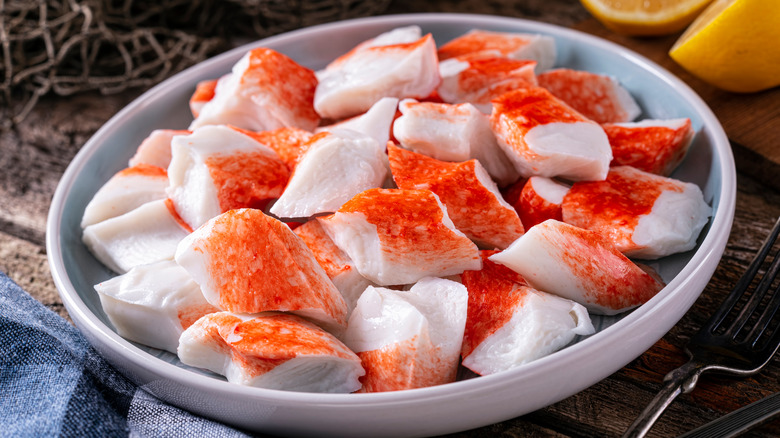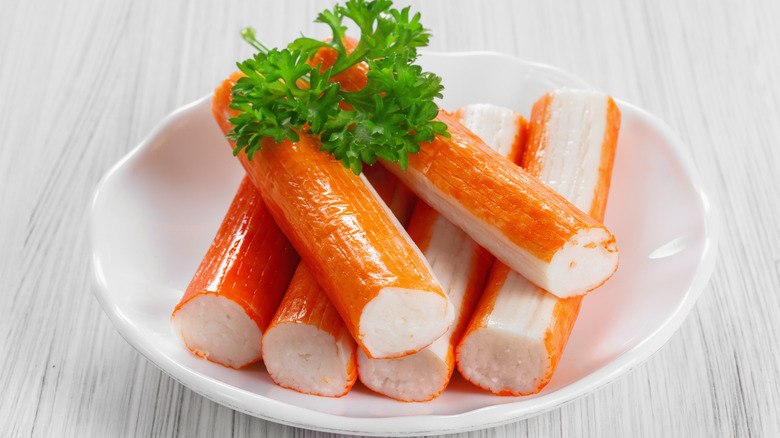Surimi Is The Fishy Gel That You've Probably Eaten Heaps Of
Seafood is getting more expensive every year and seafood distributors are looking for cheaper alternatives. You've probably heard of imitation crab, but do you know what it's made of? Imitation crab is made from a mixture of surimi, starch, and flavorings. Surimi has a long history in Japan, dating back to its first creation in 1115 AD. It was originally developed as a way to make use of excess fish that would otherwise go bad before it could be eaten. Fast forward to the 20th and 21st centuries, when food scientists discovered how to extend surimi's shelf life, and surimi has grown to become one of the largest fish products in the world. In fact, tons of surimi are sold worldwide each year.
Although surimi is also known as imitation seafood, it's actually made from real fish. Alaska pollock and Pacific whiting are the two most common fish used but, as food science improves, more fish are being incorporated — including walleye, Atlantic cod, certain species of shark, and swordfish. Essentially, many of the fish that are caught that don't have as much name recognition as, say, tuna or salmon are processed into surimi.
Even if you've never heard of it, surimi has made its way into many of our diets. Sushi is a prime target, but you can find it in other restaurant seafood offerings, such as fast food. Lobster rolls are another common place to find surimi since real lobster is nearly 10 times as expensive.
The secrets of surimi
The main appeal of surimi is how affordable it is compared to other seafood products, but there are downsides. The most frequent criticism of surimi is that it is highly processed. The fish are deboned, heavily washed, and then pulverized into a paste. The paste is flavorless so surimi manufacturers will add in flavorings to match whatever seafood it is attempting to imitate. Omega-3 fatty acids are an important nutritional benefit of eating seafood, but they are lost in the process of surimi production. Some manufacturers will add supplemental omega-3s to make up for it.
The debate over the nutritional benefit of surimi is still open. Consumer aversion to highly processed foods puts surimi in a negative light — but as a cheap alternative to traditional seafood, it is still a good source of protein.
Another aspect to consider is the environmental impact. Because surimi is using excess fish from fisheries, it can be difficult — if not impossible — to ascertain what exactly is inside and how sustainably it was sourced. Deep sea trawling is a primary fishing method for Alaskan pollock, which is known to cause serious harm to the ocean floor and is responsible for much of our overfishing problems due to its indiscriminate nature.

